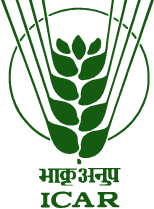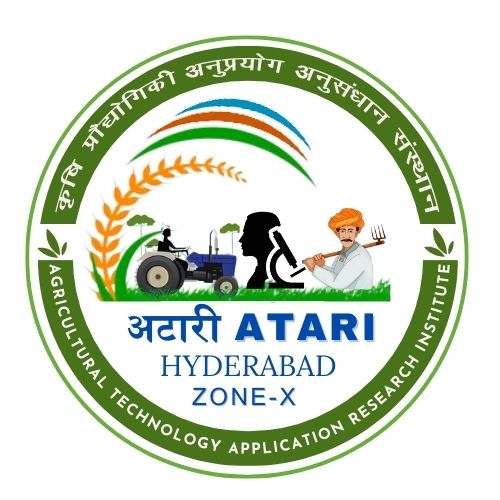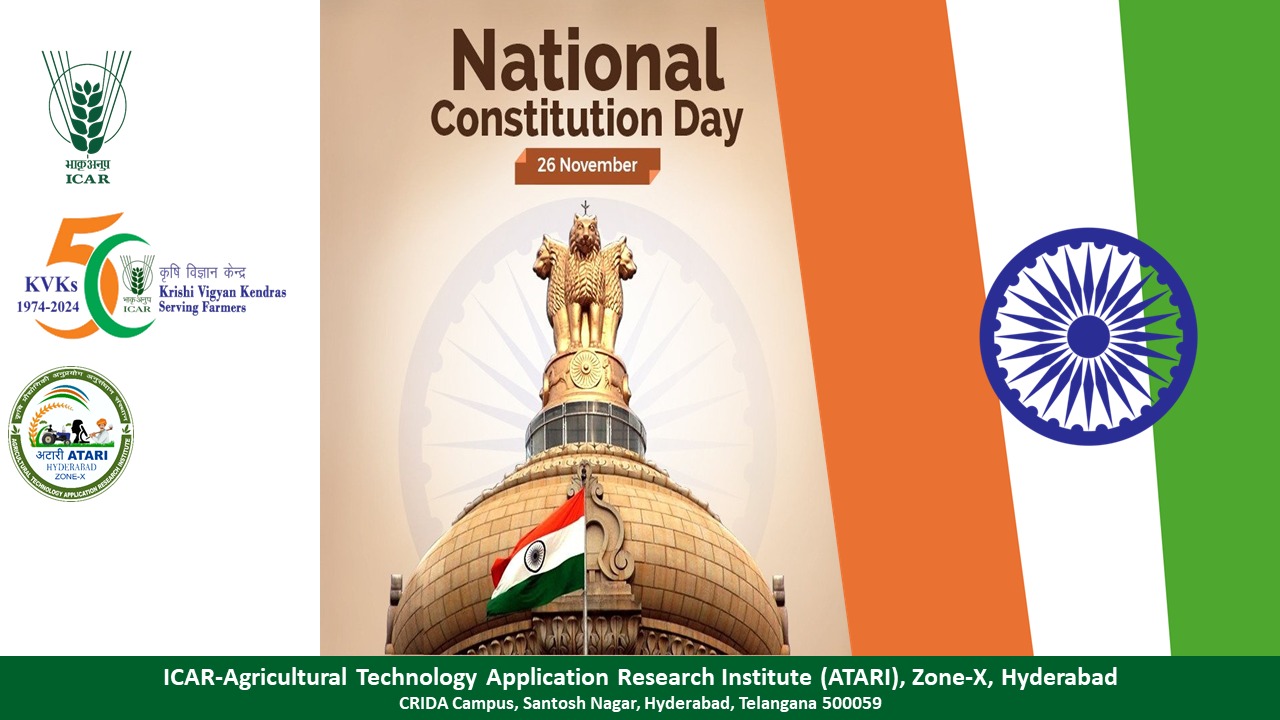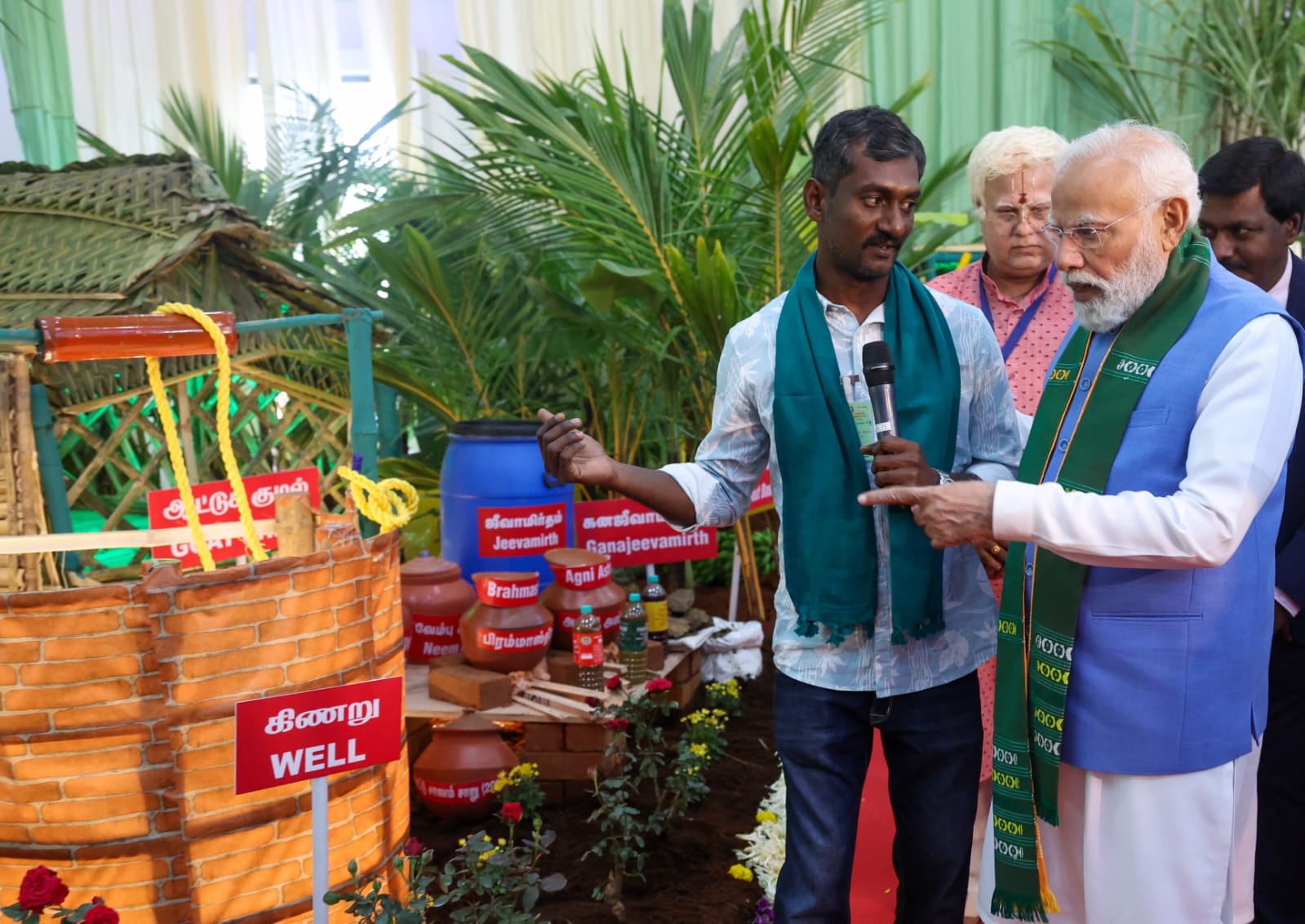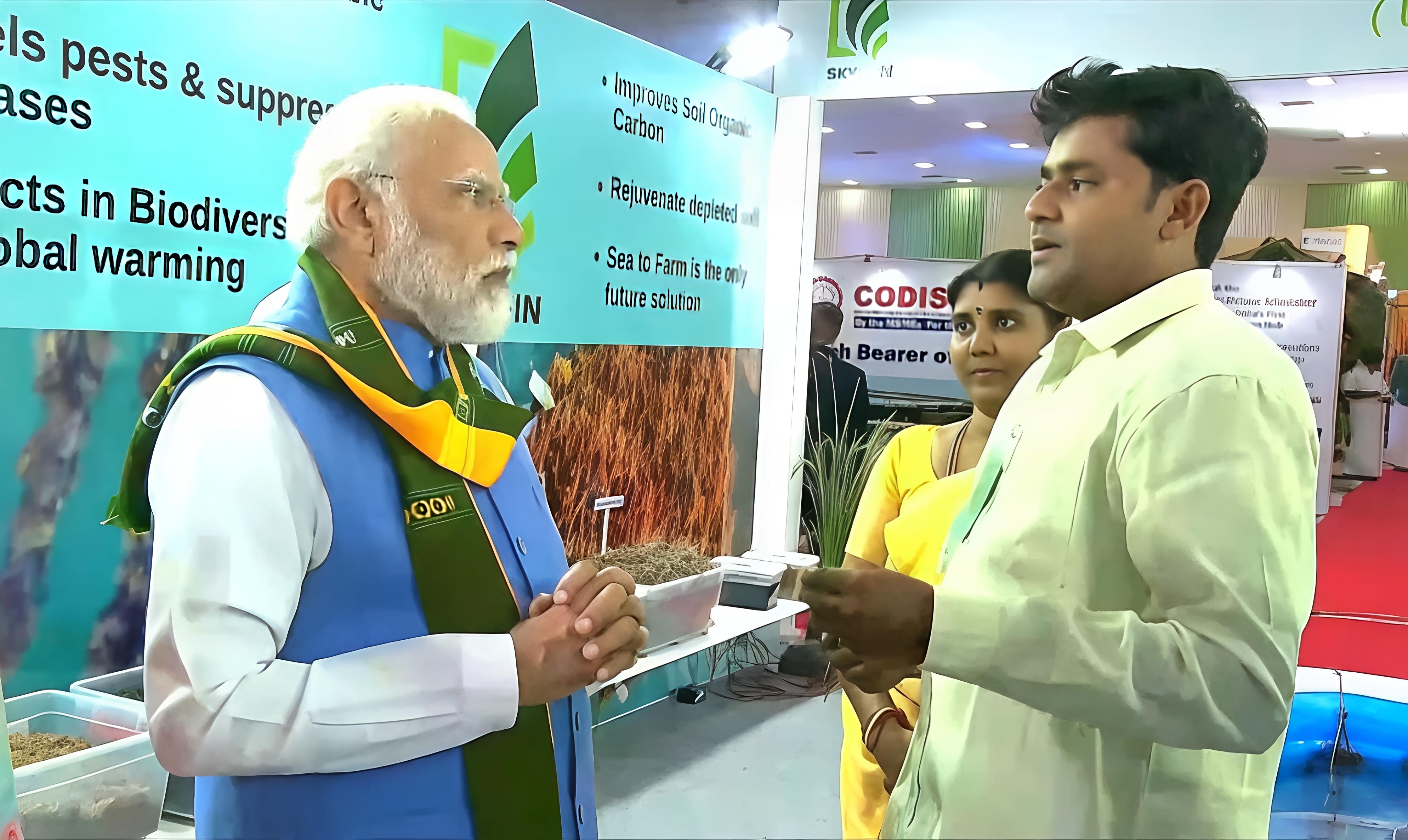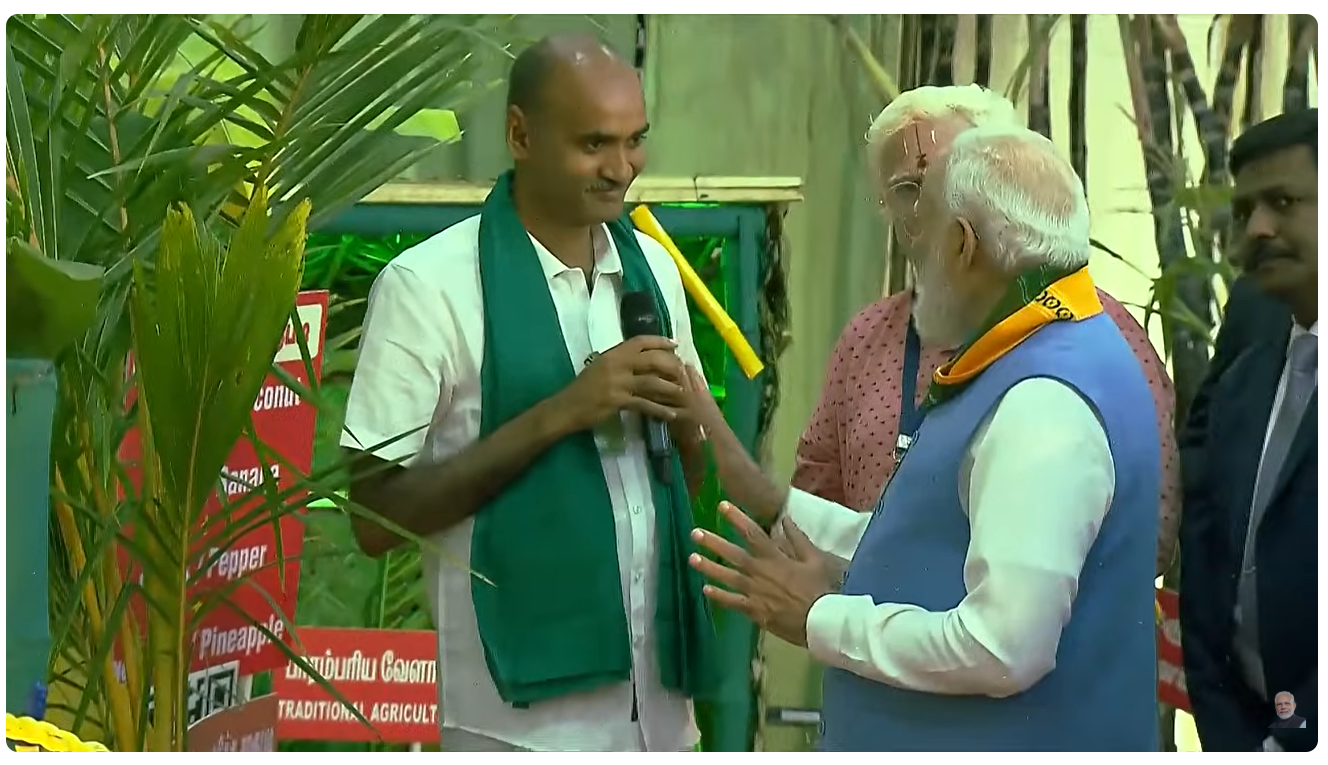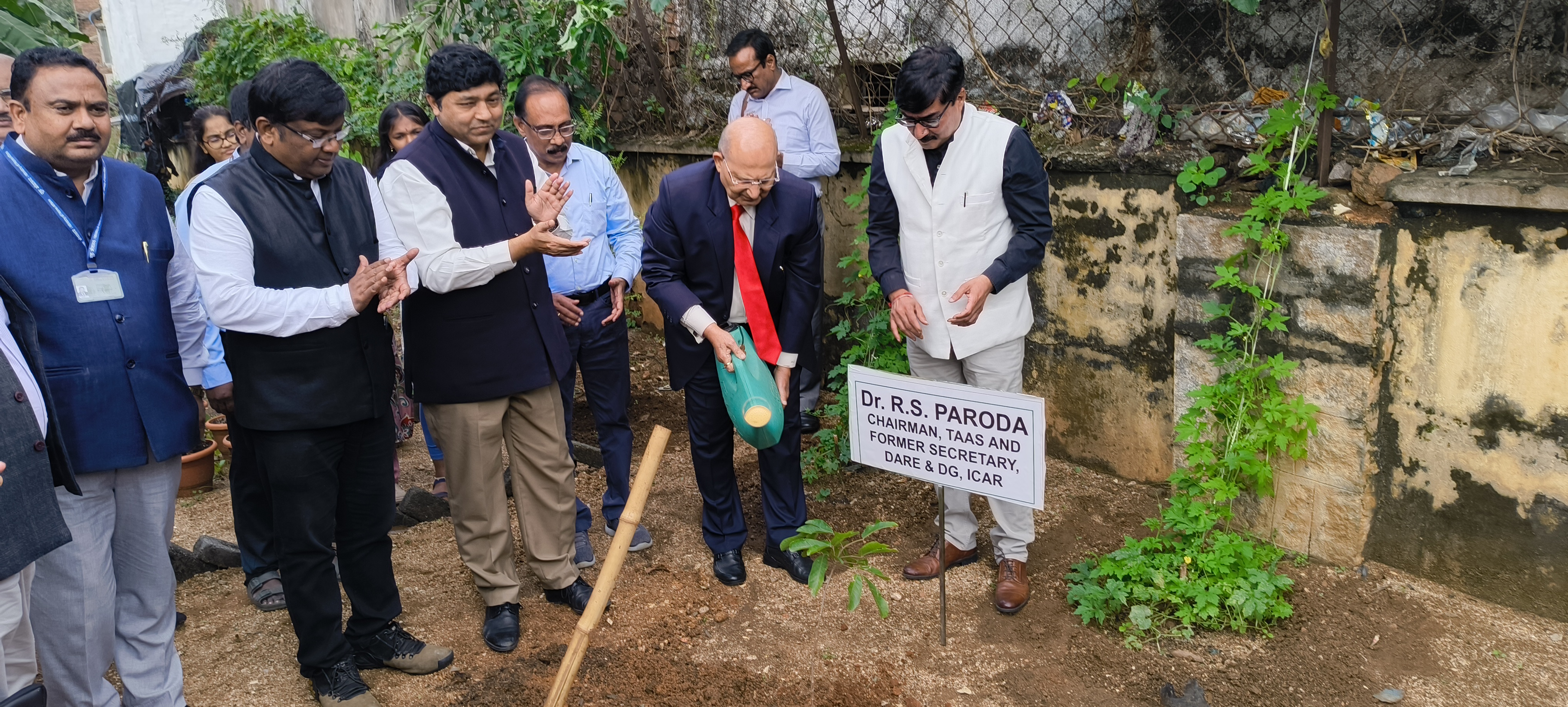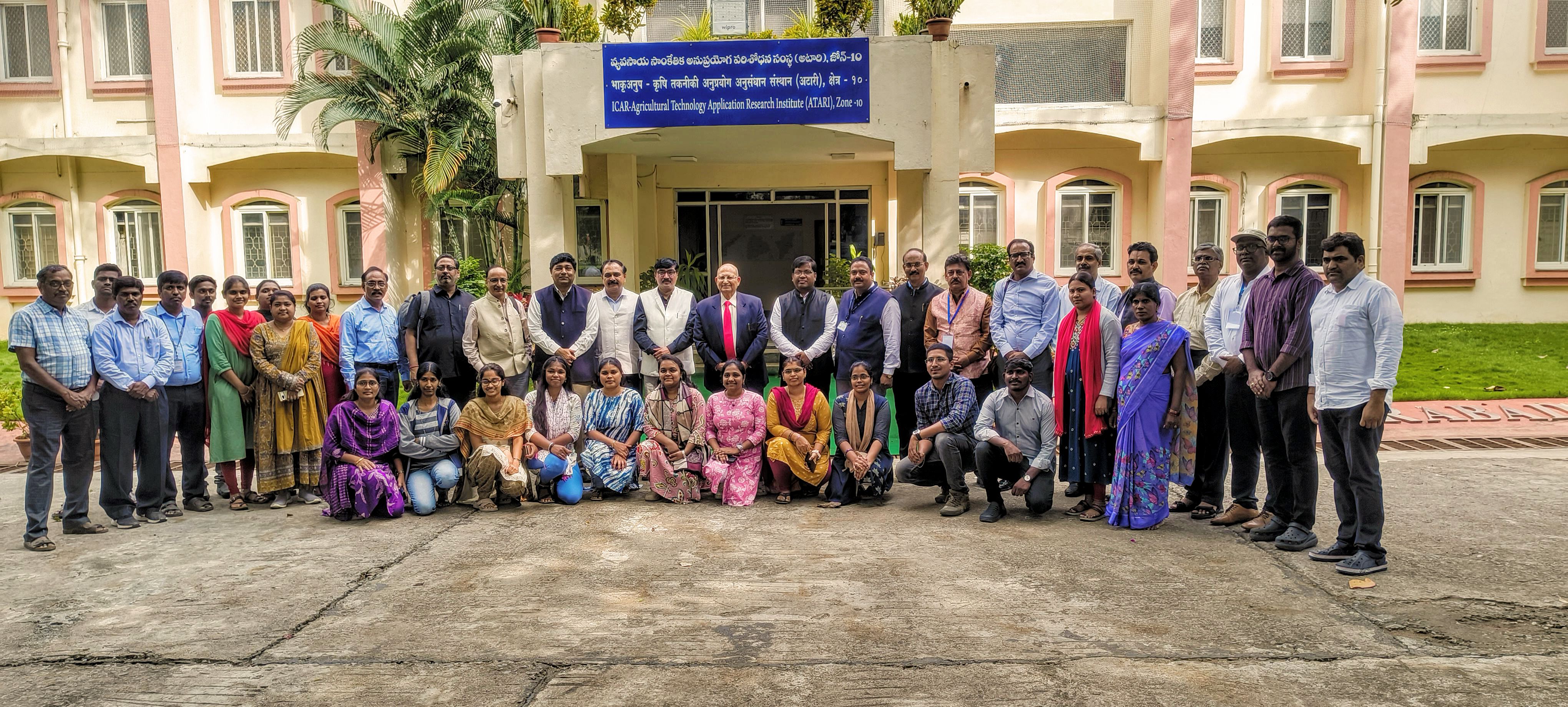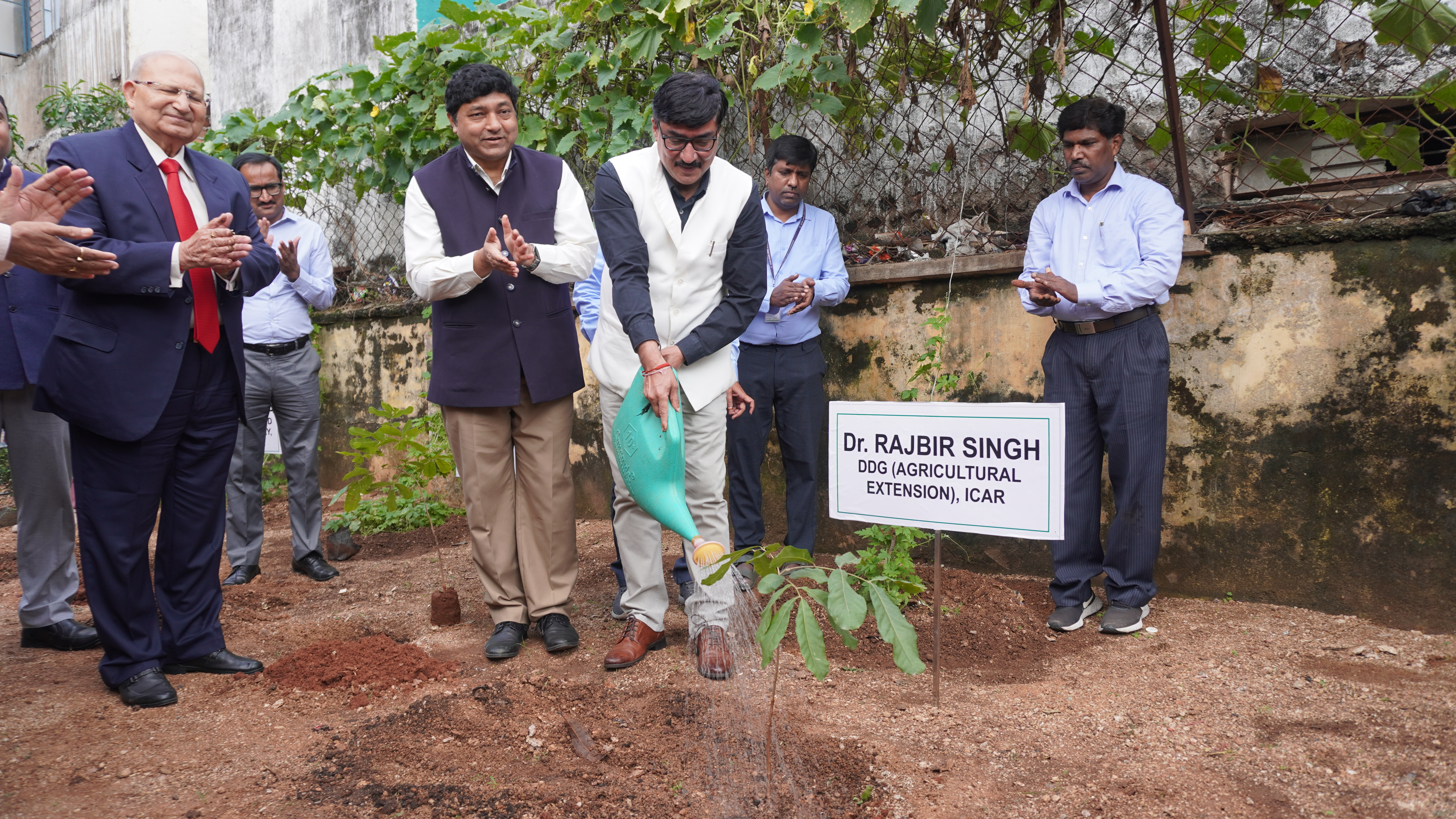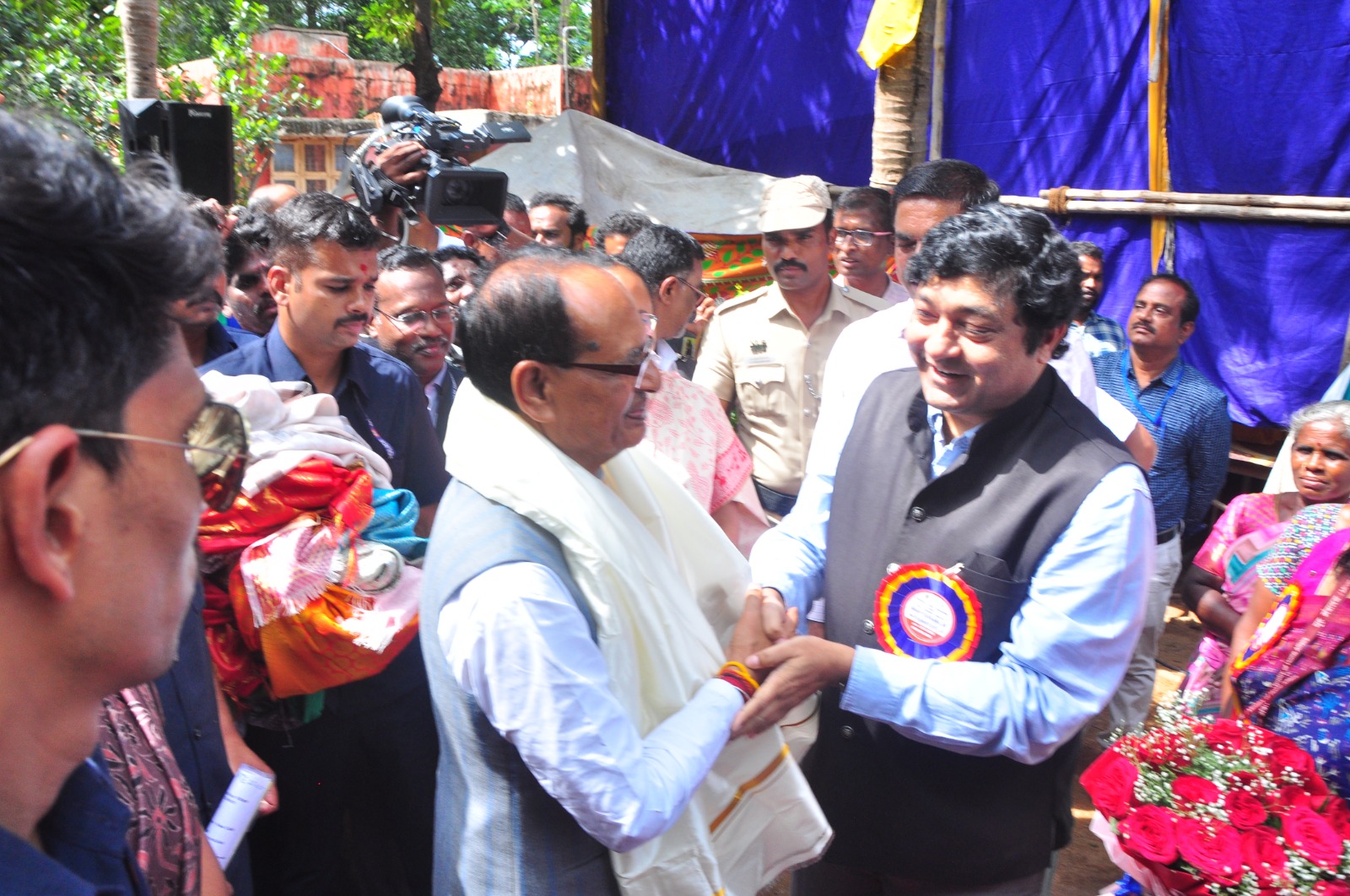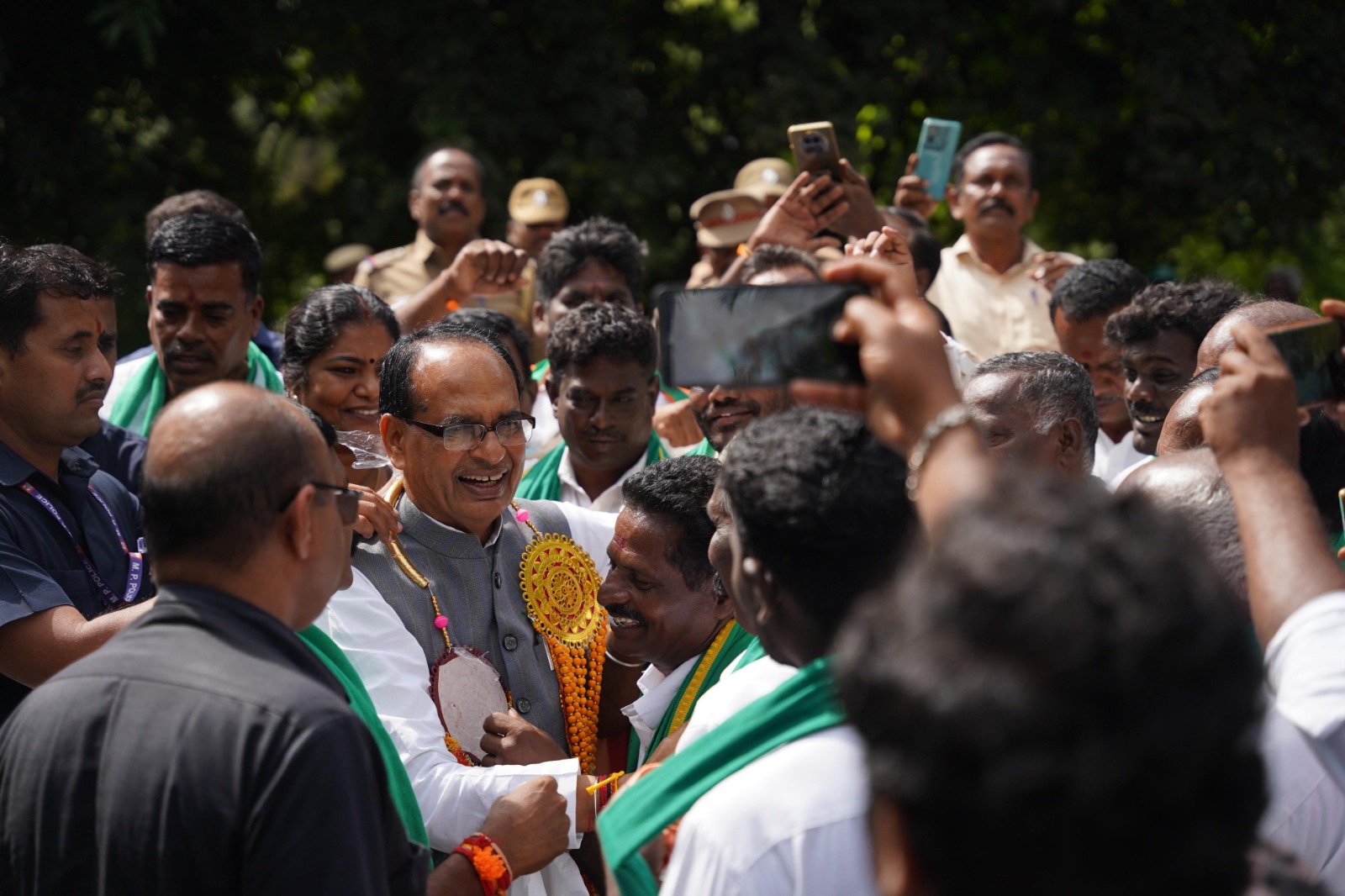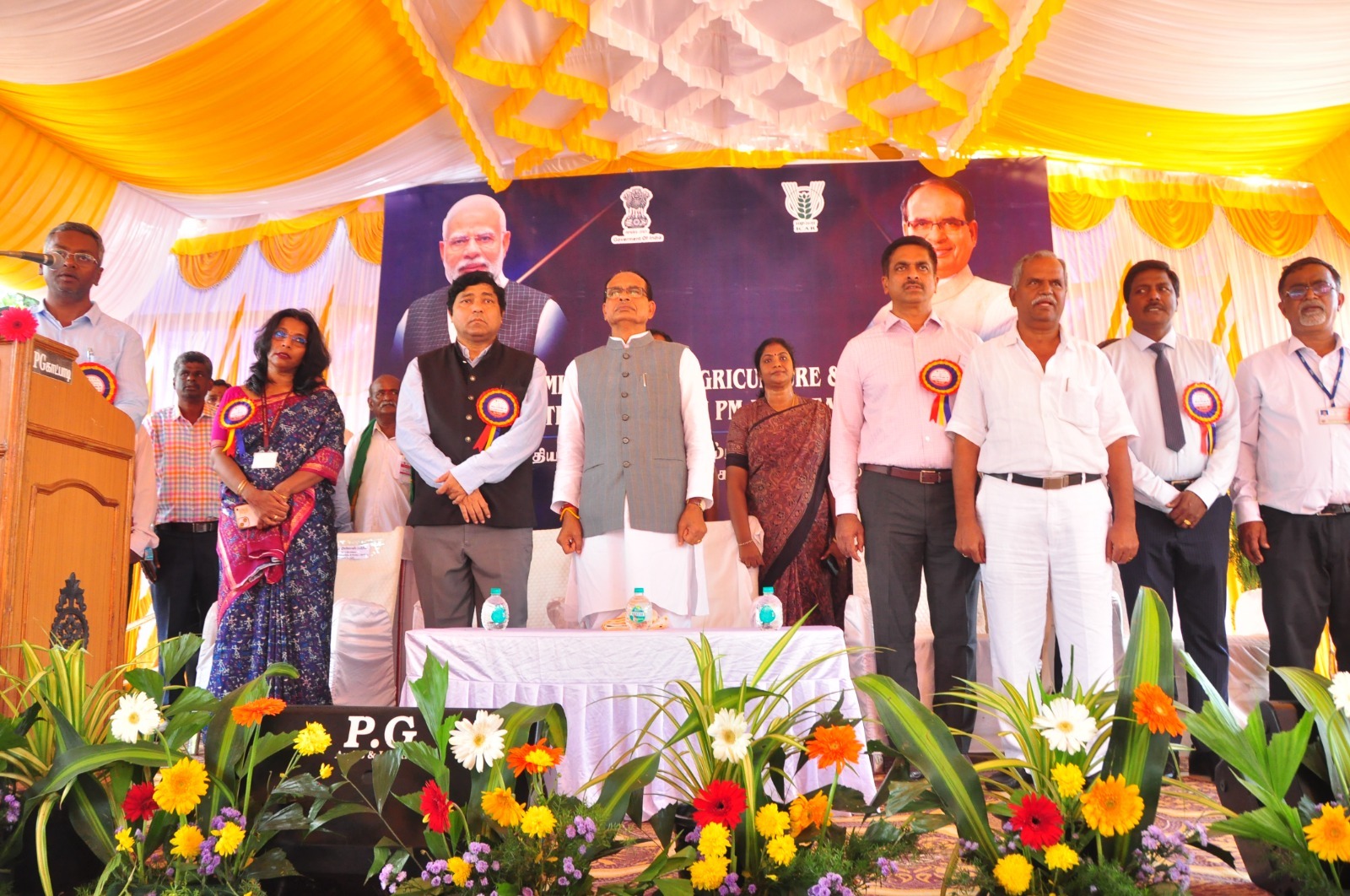The Technology Demonstration Component (TDC) represents the second major pillar of
the National Initiative on Climate Resilient Agriculture (NICRA). NICRA is a multi-institutional
and multi-disciplinary network project, operational since 2011. The project aims to enhance
resilience of Indian Agriculture to climate change and climate variability through strategic
research and technology demonstrations. Its primary objective is to demonstrate the efficacy
of existing and newly developed technologies in enhancing the resilience of Indian agriculture
to climatic variability. The initiative aims to build adaptive capacity among farmers across
151 climatically vulnerable districts in the country.
In the year 2024-25, TDC-NICRA was implemented by eight Krishi Vigyan Kendras (KVKs) in Zone X, which included:
- Andhra Pradesh: Srikakulam, Kurnool (Yagantipalli), and Anantapur (Reddipalli)
- Telangana: Adilabad
- Tamil Nadu: Ramanathapuram, Villupuram-I, and Perambalur
- Puducherry: Karaikal
The selected villages under TDC-NICRA were
categorized based on farming system typologies, and tailored technology packages were
identified to address the constraints related to soil, water, crop, and weather within
each typology. These packages encompassed modules from Natural Resource Management (NRM),
crop production, and livestock production.The technologies were demonstrated at the
household level, with their impact assessed through comparisons against previously collected baseline data.
Among the eight KVKs, 6 addressed drought and one each
addressed floods and cyclones as the major climatic vulnerability of the district. The KVKs conducted
487, 1492, 685 and 1099 demonstrations benefitting 739, 1457, 860 and 1319 farmers under NRM, Crop,
Livestock and Institutional interventions modules respectively. A total of 647.58 t of seed and 710.26 t of
fodder were supplied to the needy farmers through seed and fodder bank respectively. The KVK also conducted 83
capacity building programs and 58 extension activities benefitting 2729 and 3168 farmers respectively for bringing
awareness on climate resilient technologies and for enhancing the climate literacy of the clientele. During 2024-25,
Srikakulam and Perambalur experience drought situation and Anantapur, Kurnool, Ramnad and Karaikal had excess rainfall
compared to decennial average.
List of KVKs Implementing TDC-NICRA in Zone X
| S. No |
Name of the KVK |
Long term average of Rainfall (mm) |
Rainfall during 2024-25 (mm) |
% Deviation |
Major climatic vulnerability |
| Andhra Pradesh |
| 1 |
Anantapur (Reddipalli) |
512.4 |
706.3 |
37.84 |
Drought |
| 2 |
Kurnool (Yagantipalle) |
633 |
774.1 |
22.29 |
Drought |
| 3 |
Srikakulam (Amadalavalasa) |
1166.4 |
1059.1 |
-9.19 |
Floods |
| Telangana |
| 4 |
Adilabad |
1048 |
1121.1 |
6.97 |
Drought and heavy rains |
| Tamil Nadu |
| 5 |
Ramanathapuram |
827 |
1199.5 |
45.04 |
Drought |
| 6 |
Villupuram-I |
1012.6 |
1112.8 |
9.89 |
Drought |
| 7 |
Perambalur |
861 |
473.45 |
-45.01 |
Drought |
| Puducherry |
| 8 |
Karaikal |
1400 |
1962.7 |
40.19 |
Cyclones |
Natural Resource Management Interventions taken up during the year 2024-25
| Name of the KVK |
No. of Demonstrations/Interventions |
Farmers covered |
Area covered(ha) |
| Anantapur (Reddipalli) |
91 |
165 |
56 |
| Kurnool (Yagantipalle) |
42 |
42 |
33 |
| Srikakulam (Amadalavalasa) |
2 |
70 |
20 |
| Adilabad |
48 |
120 |
48 |
| Ramanathapuram |
282 |
302 |
110.8 |
| Karaikal |
0 |
0 |
0 |
| Villupuram-I |
20 |
20 |
5 |
| Perambalur |
2 |
20 |
4 |
| Total |
487 |
739 |
276.8 |
Crop Production Interventions taken up during the year 2024-25
| Name of the KVK |
No. of Demonstrations/Interventions |
Farmers covered |
Area covered(ha) |
| Anantapur (Reddipalli) |
136 |
136 |
58.4 |
| Kurnool (Yagantipalle) |
161 |
143 |
110 |
| Srikakulam (Amadalavalasa) |
41 |
375 |
150 |
| Adilabad |
223 |
223 |
89.2 |
| Ramanathapuram |
625 |
265 |
70 |
| Karaikal |
120 |
120 |
48 |
| Villupuram-I |
185 |
185 |
69 |
| Perambalur |
1 |
10 |
2 |
| Total |
1492 |
1457 |
596.6 |
Livestock and Fisheries interventions taken up during the year 2024-25
| Name of the KVK |
No. of Demonstrations/Interventions |
Farmers covered |
No. of animals covered |
Area covered(ha) |
| Anantapur (Reddipalli) |
82 |
82 |
390 |
2 |
| Kurnool (Yagantipalle) |
200 |
200 |
1000 |
0.8 |
| Srikakulam (Amadalavalasa) |
25 |
43 |
183 |
0.12 |
| Adilabad |
134 |
192 |
380 |
22 |
| Ramanathapuram |
176 |
275 |
1175 |
4 |
| Karaikal |
60 |
60 |
30 |
0.6 |
| Villupuram-I |
8 |
8 |
8 |
0 |
| Perambalur |
0 |
0 |
0 |
0 |
| Total |
685 |
860 |
3166 |
29.52 |
Institutional Interventions taken up during the year 2024-25
| Name of the KVK |
Performance of custom hiring center |
Performance of Seed bank |
Performance of Fodder bank |
| Farmers Covered |
Area Covered (ha) |
Farmers Covered |
Quantity of Seed (t) |
Farmers Covered |
Quantity of fodder produced during deficit period (t) |
| Anantapur (Reddipalli) |
12 |
4.8 |
3 |
2.4 |
10 |
214 |
| Kurnool (Yagantipalle) |
48 |
112 |
12 |
8.7 |
24 |
149 |
| Srikakulam (Amadalavalasa) |
89 |
54 |
20 |
53.4 |
43 |
344.5 |
| Adilabad |
248 |
576 |
67 |
1.2 |
0 |
0 |
| Ramanathapuram |
600 |
174 |
1 |
0.58 |
20 |
2.36 |
| Karaikal |
0 |
20 |
0 |
0 |
0 |
0 |
| Villupuram-I |
90 |
- |
2 |
1.35 |
0 |
0 |
| Perambalur |
12 |
5 |
5 |
0.536 |
13 |
0.4 |
| Total |
1099 |
945.8 |
110 |
68.166 |
110 |
710.26 |
Capacity building (HRD) activities taken up during the year 2024-25
| Name of the KVK |
No. of Training Programmes |
Number of beneficiaries |
| Anantapur (Reddipalli) |
6 |
180 |
| Kurnool (Yagantipalle) |
6 |
148 |
| Srikakulam (Amadalavalasa) |
31 |
1423 |
| Adilabad |
6 |
180 |
| Ramanathapuram |
13 |
390 |
| Karaikal |
6 |
87 |
| Villupuram-I |
4 |
151 |
| Perambalur |
11 |
170 |
| Total |
83 |
2729 |
Extension activities taken up during 2024-25
| Name of the KVK |
No. of Training Programmes |
Number of beneficiaries |
| Anantapur (Reddipalli) |
15 |
313 |
| Kurnool (Yagantipalle) |
9 |
442 |
| Srikakulam (Amadalavalasa) |
5 |
770 |
| Adilabad |
6 |
180 |
| Ramanathapuram |
8 |
600 |
| Karaikal |
3 |
199 |
| Villupuram-I |
3 |
385 |
| Perambalur |
9 |
279 |
| Total |
58 |
3168 |
Upscaling of technology taken up during 2024-25
| Name of the KVK |
Technology scaling up/out |
No. of farmers reached |
| Anantapur (Reddipalli) |
4 |
216 |
| Kurnool (Yagantipalle) |
5 |
336 |
| Srikakulam (Amadalavalasa) |
8 |
990 |
| Adilabad |
3 |
220 |
| Ramanathapuram |
2 |
175 |
| Karaikal |
1 |
80 |
| Villupuram-I |
3 |
395 |
| Perambalur |
4 |
143 |
| Total |
30 |
2555 |
Evidences of resilience built through demonstrations during 2024-25
The following is an account of
performance of select impactful climate resilient technologies under NRM,
Crop, Livestock and institutional interventions modules during 2024-25.
NRM interventions
Several Ex-situ and In-situ water harvesting,
and conservation interventions were demonstrated in NICRA villages during 2024-25. The
benefits accrued through some of the impactful demonstrations have been presented in the following tables.
Mulching technology for watermelon crop at Adilabad district of Telangana
| Intervention |
Fruit yield (kg/ha) |
Cost of cultivation (Rs/ha) |
Gross income (Rs/ha) |
Net income (Rs./ha) |
B:C ratio |
| Farmer's practice (Watermelon without mulching) |
34000 |
98500 |
234600 |
136100 |
1.38 |
| Mulching technology (Watermelon) |
43000 (26.47 % increase) |
110000 |
296700 |
186700 (50600 additional) |
1.68 |
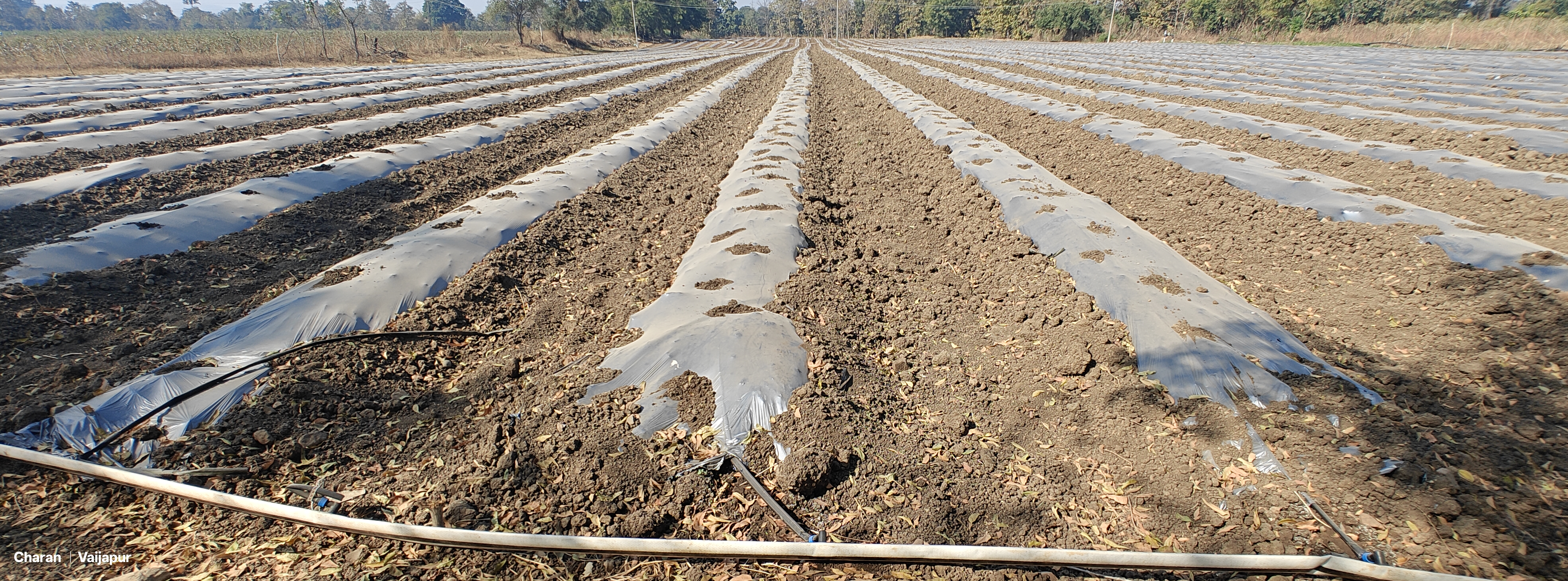
Mulching technology in watermelon-Adilabad, Telangana
Zero tillage cultivation in rice fallows-Srikakulam
| Treatments |
Seed yield (kg/ha) |
Cost of cultivation (Rs/ha) |
Gross income (Rs/ha) |
Net income (Rs/ha) |
B:C ratio |
| Farmers practice (Private Hybrid) |
6442 |
61250 |
143,334 |
82084 |
2.34 |
| In-situ moisture conservation practice (Private Hybrid) |
7290 (13.10 % increase) |
56640 |
1,62,202 |
105562 (23,478 additional) |
2.86 |
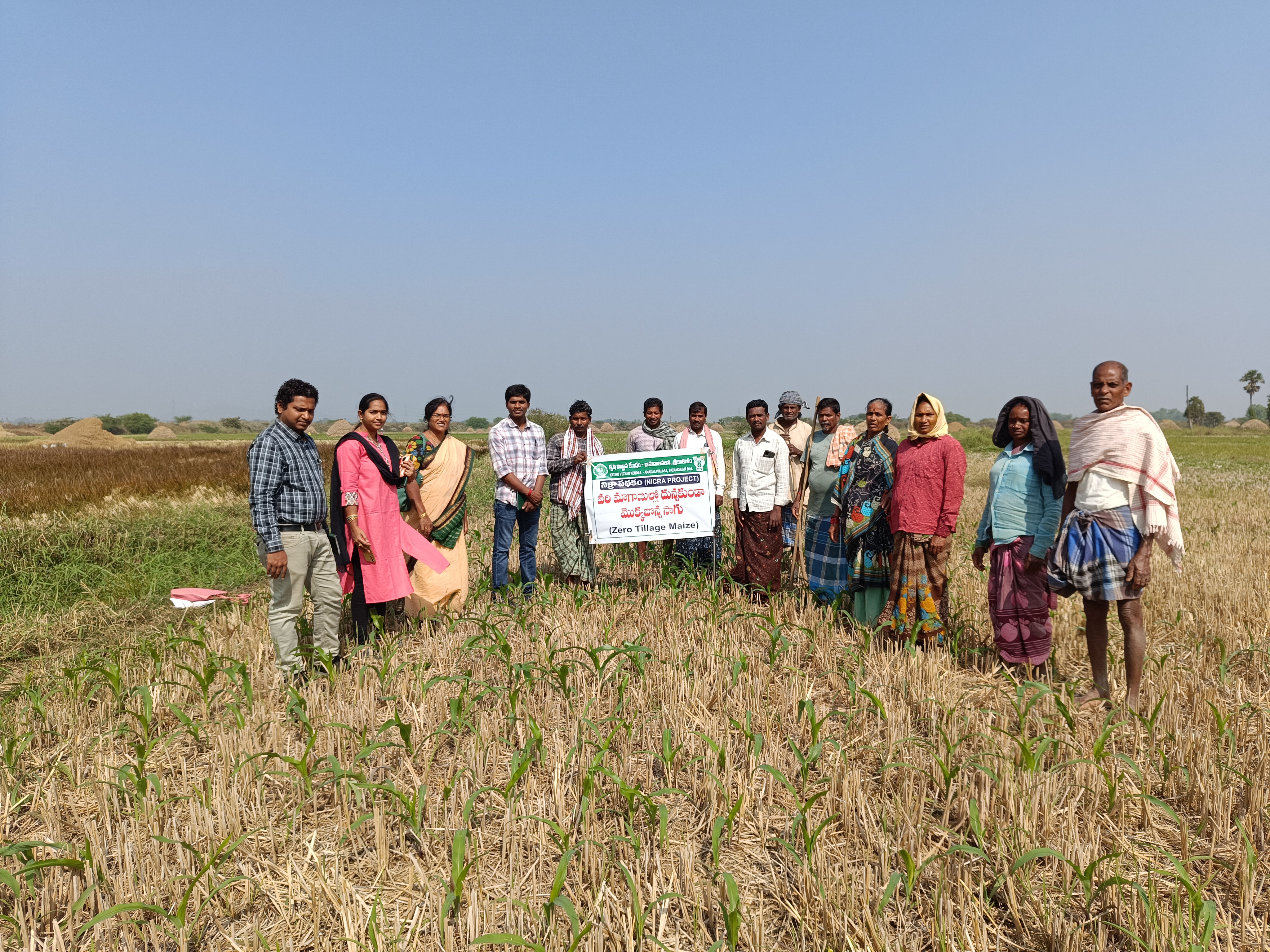
Upscaling zero tillage maize cultivation in rice fallow at Srikakulam, Andhra Pradesh
Performance of raised bed method in cotton cultivation-Adilabad, Telangana
| Treatments |
Seed yield (kg/ha) |
Cost of cultivation (Rs/ha) |
Gross income (Rs/ha) |
Net income (Rs/ha) |
B:C ratio |
| Farmer's practice Cotton (Flatbed) |
1950 |
61500 |
146660 |
85160 |
1.38 |
| Raised Bed method of cotton cultivation |
2425 (24.35 % increase) |
64500 |
182384 |
117884 (32724 additional) |
1.82 |
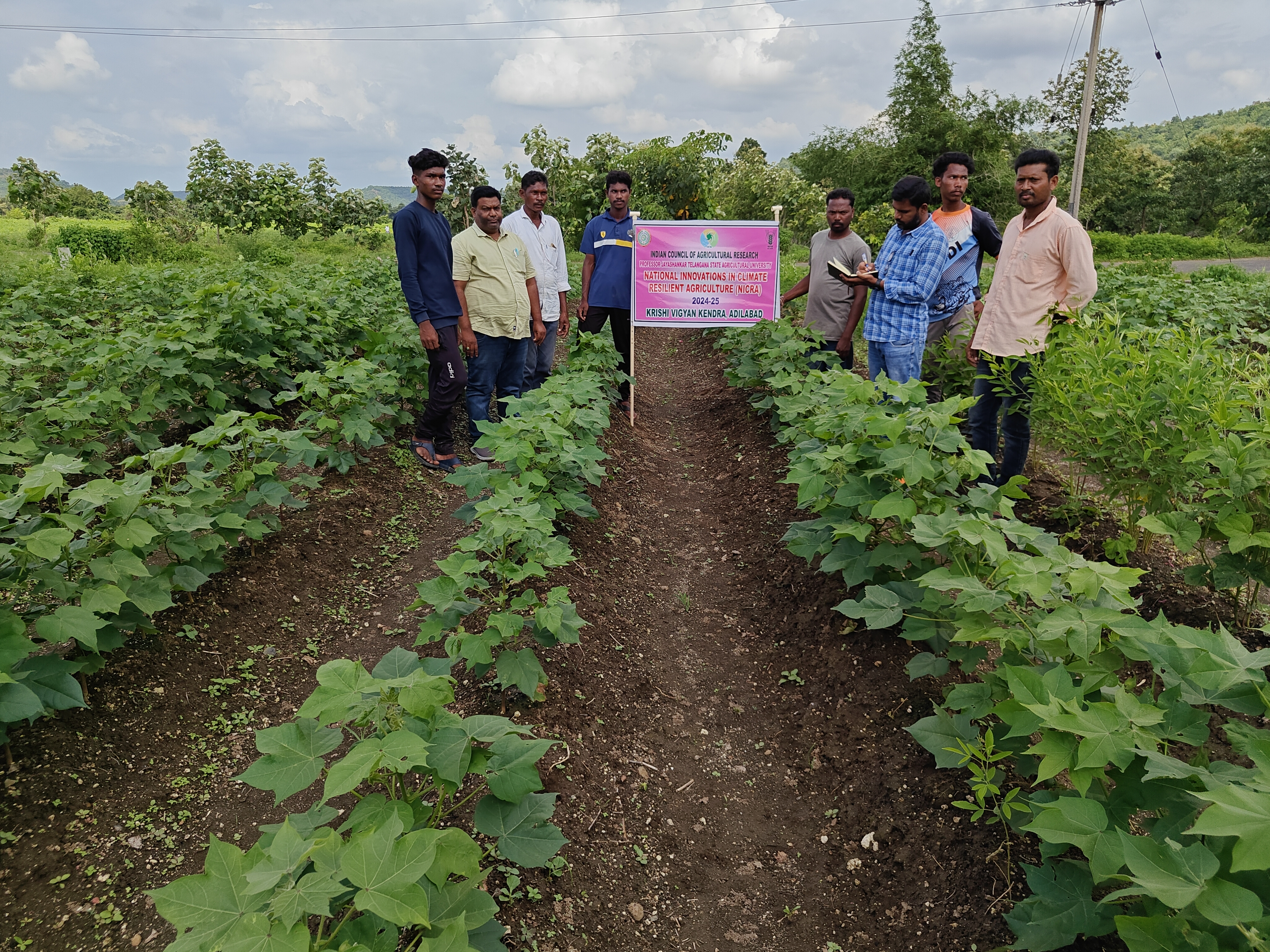
Raised bed technology in cotton -Adilabad district of Telangana
Performance of Sub soiling with chisel plough and conservation furrows Anantapur, Andhra Pradesh
| Treatments |
Seed yield (kg/ha) |
Cost of cultivation (Rs/ha) |
Gross income (Rs/ha) |
Net income(Rs/ha) |
B:C ratio |
| Rainfed with Animal |
| K-6 |
975 |
50885 |
65617 |
14732 |
1.28 |
| K-Lepakshi |
1172 (20 % increase) |
44237 |
78875 |
34638 (19906 additional) |
2.27 |
| Rainfed without Animal |
| K-6 |
952 |
52355 |
64069 |
11714 |
1.22 |
| K-Lepakshi |
1055 (10.81 % increase) |
46354 |
71000 |
24646 (12932 additional) |
1.53 |
Crop interventions
Performance of drought tolerant Bengal gram variety, NBeG-452-Kurnool
| Treatments |
Seed yield (kg/ha) |
Cost of cultivation (Rs/ha) |
Gross income (Rs/ha) |
Net income (Rs/ha) |
B:C ratio |
| Farmers practice (JG-11) |
1180 |
36625 |
64900 |
28275 |
1:1.77 |
| Improved varieties (NBeG-452) |
1405 (19.06 % increase) |
38320 |
77275 |
38955 (10680 additional) |
1:2.01 |
Livestock and Fisheries interventions
Influence of mineral mixture on productivity of livestock-Srikakulam
| Treatments |
Average milk yield/animal(L/day) |
Total milk yield per animal (L/60days) |
Cost of feeding (Rs/animal) |
Gross Returns (Rs/animal) |
Net returns (Rs/animal) |
| Farmers practice (Green fodder + Paddy straw) |
3.9 |
453.6 |
9000 |
10000 |
1000 |
| FP + Mineral mixture |
7.56 (93.84 % increase) |
239.2 |
12000 |
18144 |
6144 (5144 additional) |
Performance of poultry birds in augmenting farm income Ramanathapuram, Tamilnadu.
| Particulars |
Initial wt.(g) |
Weight of bird (Kg) after one year |
No. of eggs/year |
Total expenditure (Rs) |
Income from eggs (Rs) |
Income from meat (Rs) |
Total income (Rs) |
| Local Breed |
115 |
1.62 |
83 |
360 |
830 |
648 |
1478 |
| Improved breed: Aseel |
180 |
2.30 (41.97 % increase) |
125 (42 additional) |
510 |
1250 (420 additional) |
920 |
2170 |
Production and economics of rearing fish in farm pond
| Treatments |
Yield in kg/ Ha unit size of pond |
Cost of production/unit size of pond |
Gross income (Rs/unit) |
Net income (Rs/unit) |
B:C ratio |
| Local species (IMC Alone) |
1240 |
100000 |
148824 |
48824 |
1.48 |
| Improved species (IMC +Grass carp) |
1549.5 (25 % increase) |
100000 |
185947 |
85947 (37123 additional) |
1.85 |
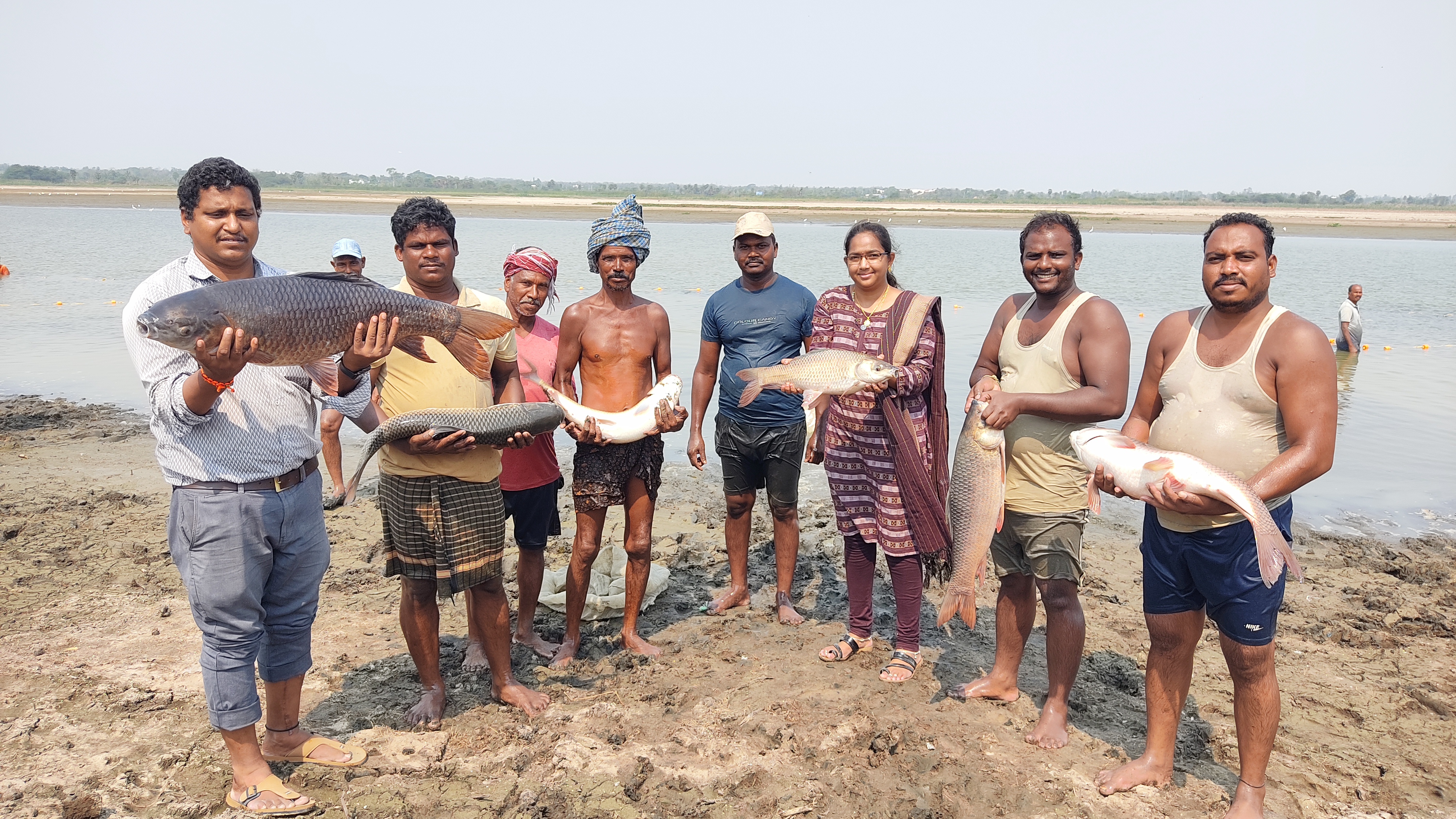
Fish seed distribution at Srikakulam district of Andhra Pradesh
Institutional interventions
Performance of fodder bank in the Village-Srikakulam
| Fodder variety |
Number of farmers benefitted |
Area proposed to cultivate for fodder (ha) |
Quantity fodder seed/slips procured for fodder bank (Kg) Farmer to farmer |
Quantity of fodder produced during defic150it period (t) |
Quantity of fodder sold to the needy members(t) |
Amount realized due to sale of fodder from the bank (Rs.) |
| Fodder crop 1(CoFs 31) |
05 |
0.3 |
3 |
49.5 |
19.8 |
19800 |
| Fodder crop 2(C0Fs 33) |
20 |
0.6 |
4 |
105 |
52.5 |
52500 |
| Napier |
10 |
1 |
10000 slips |
125 |
40 |
40000 |
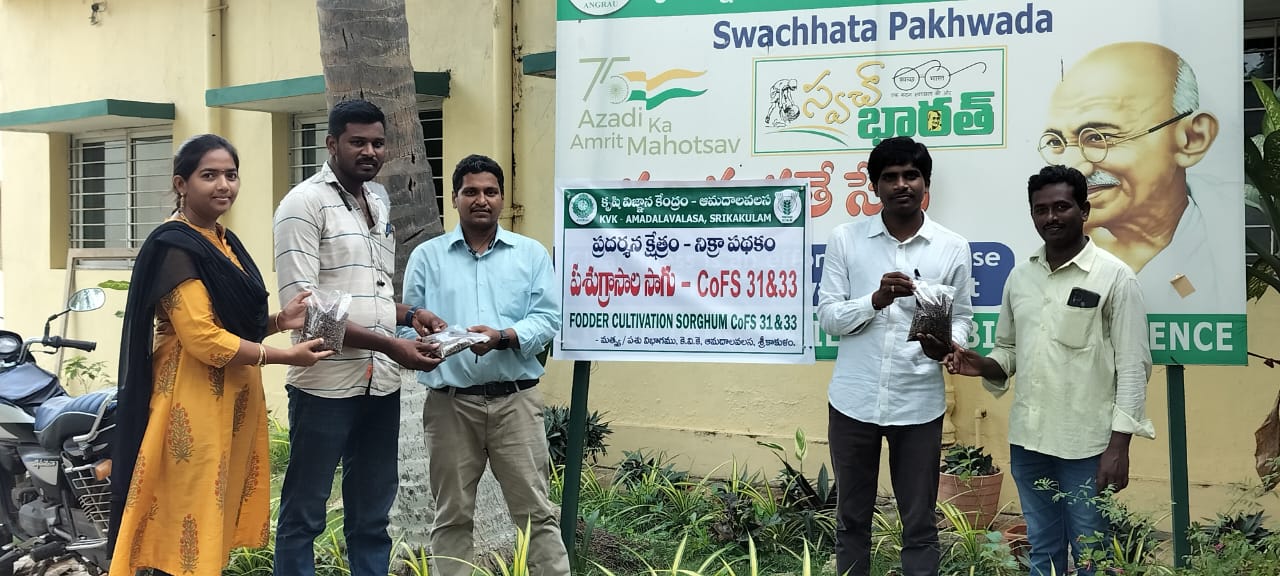
Fodder bank-Srikakulam-Andhra Pradesh
Convergence efforts for scaling up
The KVKs of the zone attempted to upscale
the promising climate resilient technologies demonstrated over years through convergence
with line departments with an aim to share the benefit of the demonstrations to a large
number of clienteles. One such example of upscaling achieved by KVK, Srikakulam is presented in the Table 4.2.16
Upscaling of technologies achieved by KVK, Srikakulam through convergence
| Village name |
Technology scaling up/out |
No. of farmers reached |
Convergence with the programme |
Approx. amount mobilised from department (Rupees) |
| Sirusuwada,V N puram,Kondavalasa,Isukalapalem |
| Upscaling of flood tolerant paddy varieties |
150 |
Department of Agriculture |
2,40000 |
| Real time contingency in paddy field |
150 |
Department of Agriculture |
1,79,840 |
| Weed management |
150 |
Department of Agriculture |
2,15,280 |
| ICM in Zero Tillage Maize |
60 |
Department of Agriculture |
1,94,700 |
| ICM in Rice fallow pulses |
40 |
Department of Agriculture |
93,600 |
| ICM in Sesamum |
35 |
Department of Agriculture |
44150 |
| Introduction of improved perennial fodder varieties |
35 |
Department of veterinary |
20,500 |
| NRM activities |
370 |
MGNREGS |
110,00,000 |





